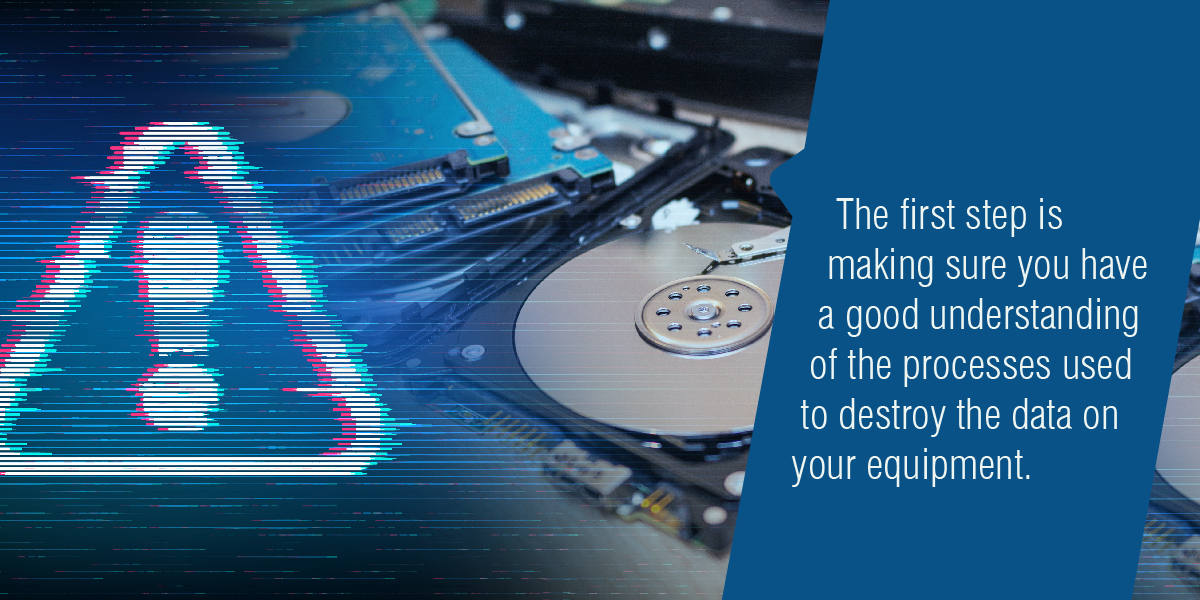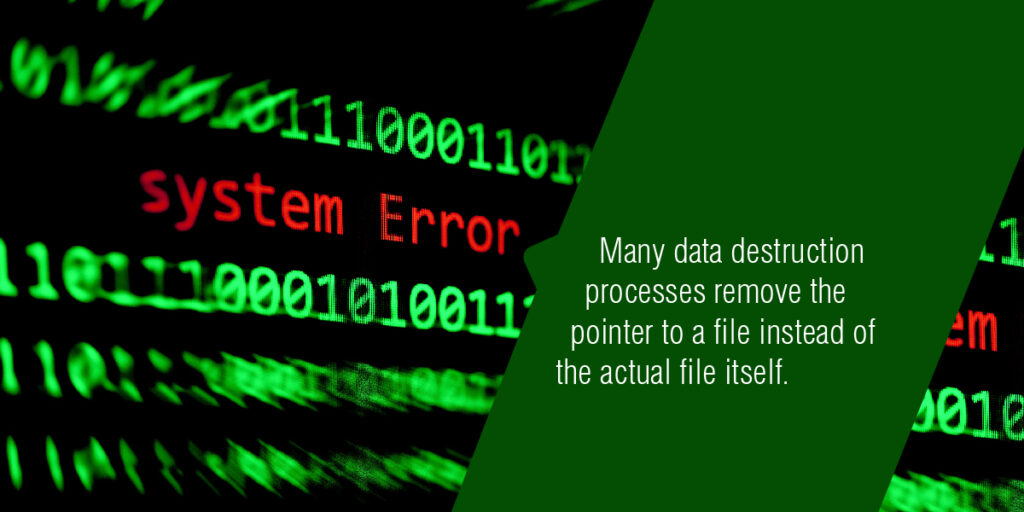Protecting your company’s data during times when data breaches are occurring regularly is a top priority. Companies should do their due diligence when planning the equipment decommission process to ensure they adhere to their data protection requirements. The first step is making sure you have a good understanding of the processes used to destroy the data on your equipment.
The terms data destruction and data sanitization are sometimes misused. Industry leaders often use these two terms interchangeably, which partly adds to the confusion. This article will provide details and help eliminate some of that confusion.
Understanding these terms gives you the ability to guard against the mishandling of data when destroying your IT assets. Avail Recovery can assist you in protecting your valuable data by making sure it is irrecoverable when going through the equipment decommissioning process.
What is Data Destruction
Data destruction occurs when data is made unreachable or unusable. This process is performed before replacing your businesses’ servers, hard drives, or other types of equipment. If it is not performed correctly, your company’s data may be at risk.
Data destruction is performed on certain types of equipment, including:
- Computer hard drives
- Servers
- Various electronic media
One problem with data destruction is that it does not always include steps to verify all data has been removed. Without a verification process, a single file or entire drive could still contain data. Data sanitization is the process that verifies the data has been removed.
Some companies include data sanitization as a routine part of their data destruction procedures. Other companies consider data sanitization to be a separate process altogether.
Here are some results that could occur when you do not verify your data has been completely removed:
- Many data destruction processes remove the pointer to a file instead of the actual file itself. A file pointer is a pointer to a structure containing information about the file, including its name and the file’s current position. This means the data is still on the machine but not easily accessible to the operating system or correlated apps.
- A file shredding process can overwrite the file, but it remains uncertain if this process was successful if you do not verify that old data has been removed.
- Companies looking to reuse or resell their equipment may still leave data on a device even after a full reformat has been performed.
A few factors will determine how much data remains on devices after data destruction and how difficult it will be to access that data. These factors include the data destruction methods used and the type of media it is on. Before performing data destruction on your equipment, make sure you evaluate your specific needs before selecting a process.
By partnering with professionals that manage the entire process, you are ensured that all your company’s data is completely removed from all devices. Avail Recovery is an experienced service provider for your IT asset disposition (ITAD) needs. (Source DataSpan)

